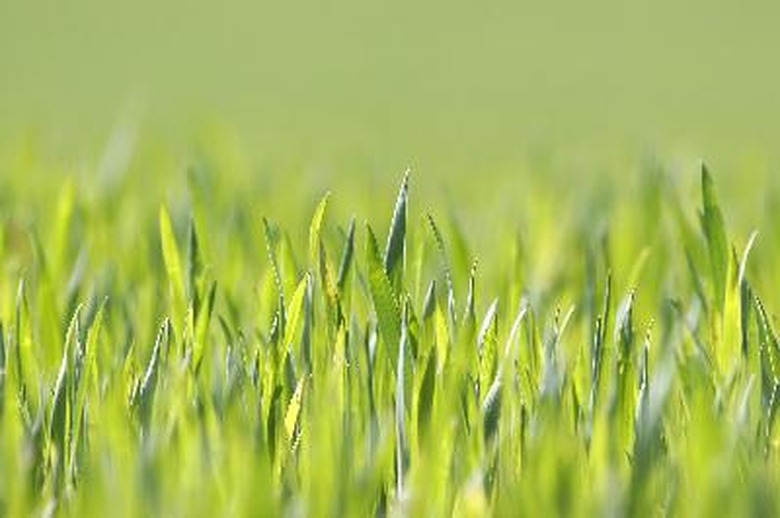Why Is My Lawn Light Green?
We may receive a commission on purchases made from links.
People often associate the sight of dark-green grass with a healthy lawn. When the grass is a lighter shade than expected, gardeners worry that there is a problem, and there could be, although some types of grass are naturally a lighter shade than you might expect.
Light-green grass may be the first sign of a nutritional deficiency — the result of insufficient nitrogen, for example. But light shades of green may also be the result of insufficient amounts of sunlight. Understanding the cause of your light-green grass can help you determine the best way to restore your lawn's lush form.
Check the Grass Species
Check the Grass Species
A large, thick lawn used to be featured in most American backyards — one small part of the American dream. While many are opting out of thirsty lawns during these days of water shortage, many people still enjoy a grassy patio area.
There are many different types of grass, each with its own qualities. Grasses can be divided into warm-season grasses that grow best in hot weather and cool-season grasses that thrive in cooler seasons. Some varieties of grass, such as Kentucky bluegrass, make suitable surfaces for yards with pet and people traffic, while other grasses, like timothy grass, are useful as livestock forage and erosion control along roadways.
Different varieties of grass naturally vary in color, so the first thing to check when you start to see lighter grass than expected is the species and its natural color. For example, fine fescue, commonly used in cooler climates, has a lighter-green color than other grasses.
Check the Nutrition
Check the Nutrition
Light-green grass can also be unhealthy grass. This is usually the case when the year's growth appears paler than usual, fades from dark green to light green, or takes on a yellow hue. This is often caused by nutritional issues.
The most common cause of a light-green lawn is a lack of nitrogen, which is a critical nutrient for grass growth. It may be time to add fertilizer. A lack of nitrogen can result in slow growth and light-colored blades. You may have started with nitrogen-rich soil, but over time, lawn grasses can deplete the soil of available nitrogen. Annual applications of nitrogen-rich lawn fertilizer will replace the waning nitrogen levels and help grass quickly return to its normal shade of green.
Confirm the Sunlight Exposure
Confirm the Sunlight Exposure
Most common species of lawn grasses require many hours of daytime sunlight. The sun is necessary for photosynthesis that keeps the grass looking green and healthy. Grass that grows in shaded areas beneath trees or on the north side of a structure can lose its deep-green color.
This can result in different shades throughout the lawn, with the pale grass limited to areas with inadequate light. Check to see if something has appeared that is shading the lighter-green areas. Removing the lower branches from overhanging trees can help restore sunlight to the underlying grass and deepen its color and so can using a garden pruner to thin out the canopy.
